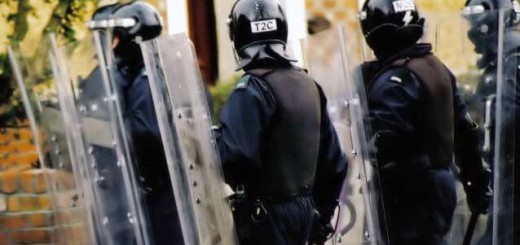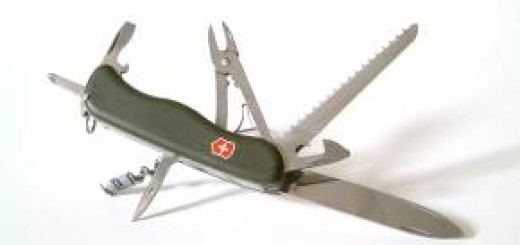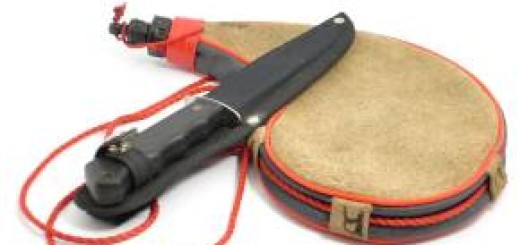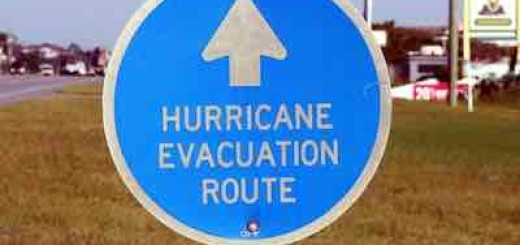Get Home Bag Essentials
What is a “Get Home Bag”?
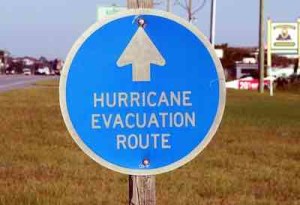
Having a “Get Home Bag” could mean the difference in an emergency situation.
Its name speaks for itself. A “get home bag” is similar to a bug out bag, but its purpose is to provide you with nourishment and supplies to aid you in the event that you may have to travel back to your home after some kind of emergency. (Makes sense, doesn’t it?). It’s not supposed to be as elaborate or sophisticated as your bug out bag, since it is meant to be transported with you and should be easily accessible at all times, whether you’re at work, school, or anywhere.
Obviously, your get home bag should be lightweight and as small as possible. If you find your get home bag to be awkward or unwieldily, you may be less inclined to actually take it with you, defeating its whole purpose. Since size and weight constraints are such a priority, we need to be very efficient about what we choose to put in our get home bag.
Do I really need a Get Home Bag? When would I ever need to use it?
Absolutely! Everyone should have one. With survival and emergency preparedness, there’s no such thing as being too prepared. This isn’t a tool that would only be only useful during a “Zombie Apocalypse”, there are many possible situations that having a get home bag can prove to be very beneficial, and potentially life-saving.
These days, people work and travel significant distances from their home everyday. Some travel 10, 20, even 50 miles daily to work and school. Although our cars, and transportation in general, are far more reliable than in times past, there are still situations that could occur where you may have to reach your destination the old fashioned way – by foot.
Here are several possible scenarios where you could be stranded without transportation:
- Your vehicle breaks down
- Flooded roads
- Terrorist attack
- Power black out
- Traffic jam
- Earthquake
- Tornado
- Blizzard
- General severe weather
- Forced evacuation
Although some of these scenarios could be very unlikely, some do occur frequently. Turn on the news on any given night, and you’d hear about any one of these situations that have happened that day somewhere on the planet. You or someone you know may have already been in one of these situations. Let’s make sure if you ever are (or are again), that you have the tools to get home safely.
What type of Get Home Bag should I get?
The type and size of bag you use is going to depend on your situation. Backpacks make the most sense, since you’ll be carrying it on potentially long walks.
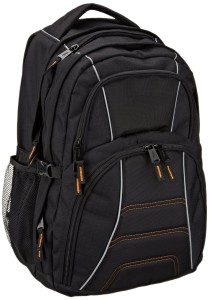
A get home bag doesn’t have to be elaborate. A basic one will do, like this one available from Amazon.com.
Something light, but sturdy is a must. Take into consideration that it could take you a day or even days to get home. You don’t want a bag that is heavy, cumbersome, or falling apart when you need it the most.
It doesn’t have to be fancy, nor expensive. As long as it holds what you’ll need, is maneuverable, and functional, even an used school backpack would be sufficient.
I’d recommend buying or using a “low-key” bag, instead of a military “tactical” style. A plain old backpack wouldn’t arouse attention and possible suspicion, as much as a camouflaged tactical pack would. In an emergency, you’d want to blend in with everyone else as much as possible.
What should I pack in my Get Home Bag?
Since we all live in different climates and terrains, and travel different distances on a daily basis, there will be things you may have to add to, or omit from your get home bag list. Another factor to take into consideration is what you normally carry with you for your job. For example, a fire fighter or patrolman would already have a lot more emergency equipment with them, than say, an IT professional. Use your discretion when deciding if you should carry duplicate contents. I’d still recommend having a fully equipped get home bag in addition to any gear you use for work.
So… What should you include?
Here’s our list of get home bag essentials:
Water – Water is very important, especially in a situation that may involve you walking for hours at a time. Unfortunately, water is also very heavy to carry. I recommend including at least 1 liter in your bag using any combination of smaller water bottles, juice boxes, or an integrated bladder in your bag. I’d also highly recommend packing a LifeStraw Filter so you can drink water from various sources during your journey.
Footwear – Depending on what your normal work attire is, it may be wise to pack a pair of walking or hiking shoes, depending on your expected terrain. Have you ever tried walking 20 miles in high heels or dress shoes? Exactly. Add a pair of socks too.
Clothing – Whether you’ll be walking all day in the sun, or in cold weather, pack a hat, either a baseball cap or a winter hat (depending on your climate and season.) A water proof emergency poncho will keep you dry. Gloves, underwear, and a thick t-shirt/thin sweatshirt are good additions as well. Don’t forget a pair of sunglasses.
First Aid Kit – Assemble your own or buy a pre-made kit. You don’t need it to be elaborate. Bandages and gauze to take care of cuts, scrapes, and blisters should be fine. Maybe a small trial pack of ibuprofen. Remember, lighter is better. Also include 3 days worth of any medications that you regularly take.
Food – Since you need to travel lightly, and you shouldn’t expect to be using your get home bag for weeks of survival, what you pack for food should be basic and easy. Energy bars are a perfect source of nutrition as well as being lightweight, and they don’t need to be cooked. Beef jerky, candy bars, and gum are good items that take up little space, weigh little, and provide a morale boost.
Light Source – A lightweight flashlight with extra batteries is a good idea. For the hands-free capability, I’d go with a water-resistant headlamp with extra batteries.
Fire Source – While I’d usually recommend a firestarter in most survival situations, I think a couple of disposable lighters, and/or a box of waterproof matches would be sufficient to start a fire if you’d need to. This is assuming you’d need to cook, or start a fire for warmth. While sleeping, for example.
Navigation – It’s very possible that your smart phone or GPS system may not be functioning during your travels. A good old-fashioned map of your area and a compass will keep you pointed in the right direction. Remember, the goal is to get home as soon as possible, and to cover as much ground as possible. Getting lost won’t help you do either.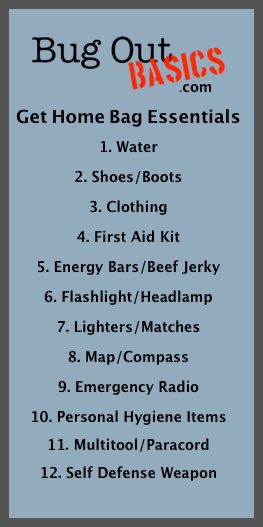
Emergency Radio – A small solar or crank radio can keep you informed with weather condition or other events you need to know about. Ideally, one that can also charge your cell phone. Like this one.
Personal Items – Toothbrush, toothpaste, hand sanitizer, a small towel, and a roll of toilet paper.
Tools – I’m a big fan of paracord, it’s lightweight and very useful, so pack at least 50 feet, preferably 100 feet or more. A quality multitool should cover any need for tools you may face. If it doesn’t have a durable knife, pack a separate one.
Self Defense – Being away from home during an emergency situation can be very dangerous, people tend to panic and become unpredictable and desperate. Having a way to protect yourself is very important. If you carry a firearm, make sure to pack extra ammunition. Even if you do carry a gun with you, I’d recommend a knife for protection as well, although you’d want to keep your distance from an attacker. Pepper spray would be an option as well.
Money – No, your ATM card doesn’t count. You need cash. Small bills divided among different pockets and spots. Don’t make yourself a target.
You need to have one get home bag with you at all times. You should keep one in every car you drive. That way you’ll always have one wherever you may be. You can keep it in the trunk of your car, and leave it there, or if you don’t drive, or want it to be more accessible, you can take it in to work with you.
Each member of the family should have their own bag, and shouldn’t share items from others’ bags. That way, each bag always contains its full contents, and in the event that you become separated, each person will be self sufficient.



